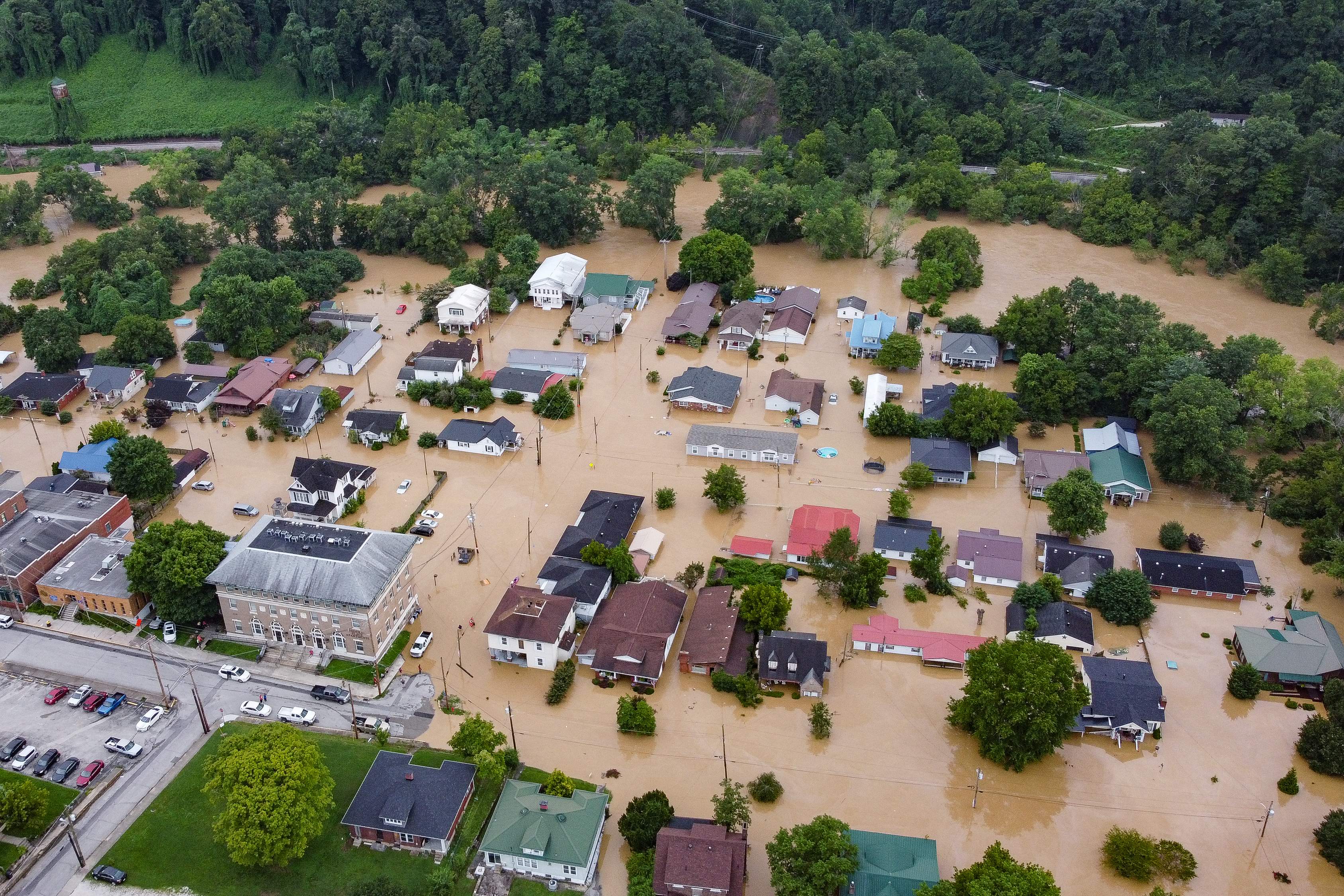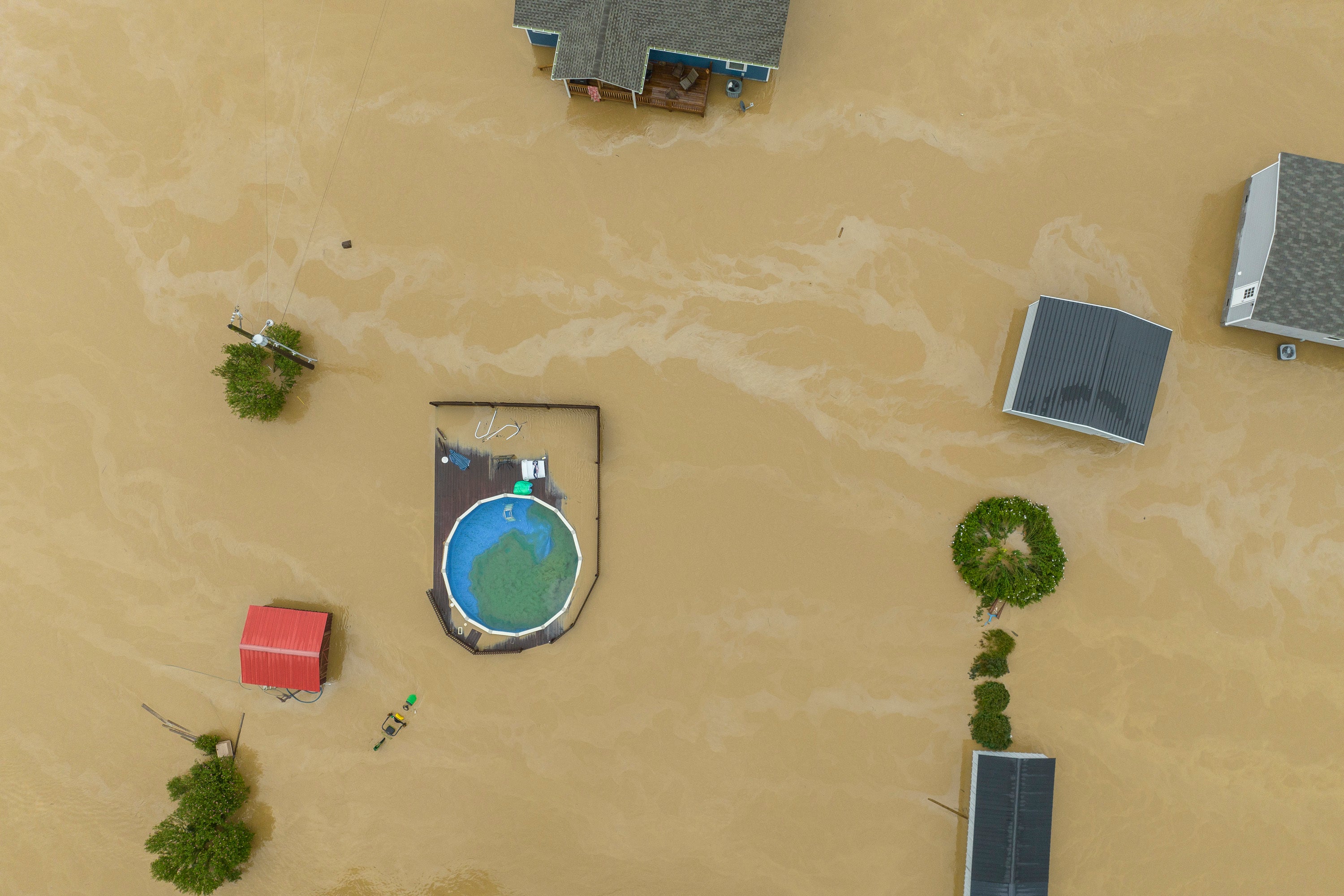Eastern Kentucky flooding: Four young siblings killed as death toll rises to 16
Kentucky’s governor Andy Beshear called it the “worst flooding disaster” in his lifetime
Your support helps us to tell the story
From reproductive rights to climate change to Big Tech, The Independent is on the ground when the story is developing. Whether it's investigating the financials of Elon Musk's pro-Trump PAC or producing our latest documentary, 'The A Word', which shines a light on the American women fighting for reproductive rights, we know how important it is to parse out the facts from the messaging.
At such a critical moment in US history, we need reporters on the ground. Your donation allows us to keep sending journalists to speak to both sides of the story.
The Independent is trusted by Americans across the entire political spectrum. And unlike many other quality news outlets, we choose not to lock Americans out of our reporting and analysis with paywalls. We believe quality journalism should be available to everyone, paid for by those who can afford it.
Your support makes all the difference.At least 16 people, including six children, have been killed in flash flooding in Kentucky.
Kentucky Governor Andy Beshear updated the death toll on Friday morning, and said that the number of fatalities was expected to double.
The Lexington Herald-Leader reported that four siblings, ranging from age one to eight, had been killed during the floods in Knott County. At a briefing on Friday afternoon, Governor Beshear said he had received notice that the bodies of the four children had been located.
The governor has called this Kentucky’s “worst flooding disaster” in his lifetime.
“It has wiped out what we believe are hundreds of homes. We have half of some of our counties under water. Hundreds of Kentucky families are going to lose everything. It is tough,” he told NBC on Thursday.
Floodwater rushed though much of the Appalachian region, often flooding cities in river-lined valleys, reported the Associated Press. Some areas have suffered substantial infrastructure damage, with roads and bridges destroyed.

The flooding was concentrated in eastern Kentucky, around 80 miles southeast of Lexington.
The governor declared a state of emergency on Thursday, after heavy rains Wednesday and overnight Thursday started the floods.
The governor said that some people had been killed in the night, “maybe even in their sleep”.
Rescues were being hampered by the high waters and strong currents, Governor Beshear said. As of Friday morning, nearly 300 people had been rescued, including over 100 via air. People have reportedly been rescued from trees as they try to escape the floodwaters.
Many roads remained blocked or impassable. On Friday, Mr Beshear said that getting an accurate count of the total number of people missing would be difficult since communication was spotty in many areas.

In addition, the governor said that there had been some concern about a dam in Breathitt County breaching, though concerns had been lowered somewhat overnight. Residents in that floodplain have been encouraged to evacuate.
Over 21,000 people were still without power by Friday afternoon, according to poweroutage.us.
President Joe Biden officially declared a federal disater in response to the floods on Friday, opening up more resources for emergency services and first responders.
After doing a flyover of the affected area with FEMA Administrator Deanna Criswell, the governor described seeing mudslides and impassable roads in Perry County and hundreds of homes underwater in the city of Jackson.
The National Weather Service (NWS) still has active flood watches in parts of Kentucky, West Virginia, Virginia, Tennesssee and Ohio, and has warned people to never drive through flood waters.
Over the next week, up to three more inches of rain were forecast for parts of eastern Kentucky, in addition to surrounding areas in Tennessee, according to NWS.
“This isn’t over,” Governor Beshear said on Friday morning.
The governors of West Virginia and Virginia also declared states of emergency on Thursday in response to damage in their states, though the impact was generally smaller than what Kentucky has witnessed.
Earlier this week, severe flash flooding struck in St Louis, Missouri, and surrounding areas. In addition, flash floods hit parts of Las Vegas, Nevada last night, including washing over the Strip and into casinos.

A study published this year found that flash flooding was likely to become more common – and “flashier” – in the US due to the worsening effects of the climate crisis.
Unlike flooding from rivers or the ocean, flash floods don’t require a body of water to overflow but form when there’s simply more water than the ground can absorb.
Higher temperatures are powering more intense rainstorms, which can deluge an area quickly and see floodwaters rise quickly.
The research “shows in the future that the storms are going to get more intense and we’re going to have bigger impacts from these events”, Jonathan Gourley, a hydrologist at the National Oceanic and Atmospheric Association’s National Severe Storms Laboratory, previously told The Independent.
This article is being updated




Join our commenting forum
Join thought-provoking conversations, follow other Independent readers and see their replies
Comments